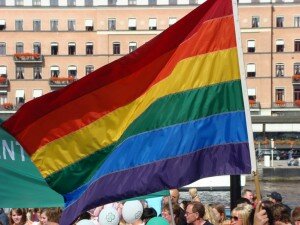Today’s post originally appeared on the VolunteerMatch blog site on June 21, 2012. The post was originally written by Cristopher Bautista, a current intern and blogger for VolunteerMatch.
 So this June is Pride month, when we celebrate the accomplishments of the LGBT community. I’m someone who works alongside nonprofit professionals. I’m also someone who benefits from the economic empowerment and healthcare services that local nonprofits provide. The fact that I’m a transgender person of color puts me in a demographic more likely to face employment discrimination and less likely to be able to access healthcare— it was this acute awareness of this injustice and my own negative experiences that motivated me to work for the nonprofit sector in the first place.
So this June is Pride month, when we celebrate the accomplishments of the LGBT community. I’m someone who works alongside nonprofit professionals. I’m also someone who benefits from the economic empowerment and healthcare services that local nonprofits provide. The fact that I’m a transgender person of color puts me in a demographic more likely to face employment discrimination and less likely to be able to access healthcare— it was this acute awareness of this injustice and my own negative experiences that motivated me to work for the nonprofit sector in the first place.
LGBT or not, we all need a home, food, employment, healthcare, and a sense of self worth. LGBT people are also people of color, immigrants, the young, the old, survivors of violence, the homeless, the poor, the under and uninsured, the unemployed, and the marginalized.
Regardless of how you feel about LGBT people and whether or not your organization is LGBT, those you serve and who work alongside you—a good chunk of those will be LGBT, whether they tell you or not. To serve your communities also means to serve the LGBT community.
So how can your organization adapt to the needs of LGBT people? Here are a couple pointers:
- In the space where you interact with the people you serve, make sure there’s a visible sign that shows you are an LGBT ally. Think about hanging a rainbow flag someplace easily seen, or hanging “safe space” signs.
- If you are a shelter, make sure that your policies cover the needs of transgender people, especially transgender women. (Read Transitioning Our Shelters: A Guide to Making Homeless Shelters Safe for Transgender People)
- If you are an organization that serves women, make sure to mention that you also support transgender women somewhere visible on your website and print materials.
- Train your employees in LGBT sensitivity. For those in the San Francisco Bay Area, public health consultant Willy Wilkinson actually offers free sensitivity training.
- On your forms, think about adding a “preferred name” field. For most, it will simply be a place to write in a nickname. For transgender folks, this provides a space for them to disclose their transgender identity.
- Make the extra effort to recruit LGBT volunteers, especially people of color and transgender people. In your recruiting efforts, make it clear that you want to serve the LGBT community, and part of that effort depends on volunteers.
- When meeting transgender clients or volunteers, make sure to ask what pronouns they prefer. It might be an uncomfortable thing for you to ask, but asking about appropriate pronouns is common in the transgender community, and shows that you want to accommodate their needs. It will also be worth it to look up gender neutral pronouns.
June is certainly a month to celebrate the resilience of the LGBT community. This weekend is Pride weekend here in San Francisco, and I’ll be out there, waving my little rainbow flag. We’ve come a long way, and there is a lot to be proud of. But Pride is also a reminder that though there’s a lot to be thankful for, there’s a lot more we need to do.
To learn more:
How to Respect a Transgender Person (WikiHow)
Cultural Responsiveness in Serving LGBT Individuals and Families (Gil Gerald & Associates)
Caring for LGBT Seniors (Lavender Seniors of the East Bay)
Growing Leadership: Shining a light on LGBT people of color (Model D)


